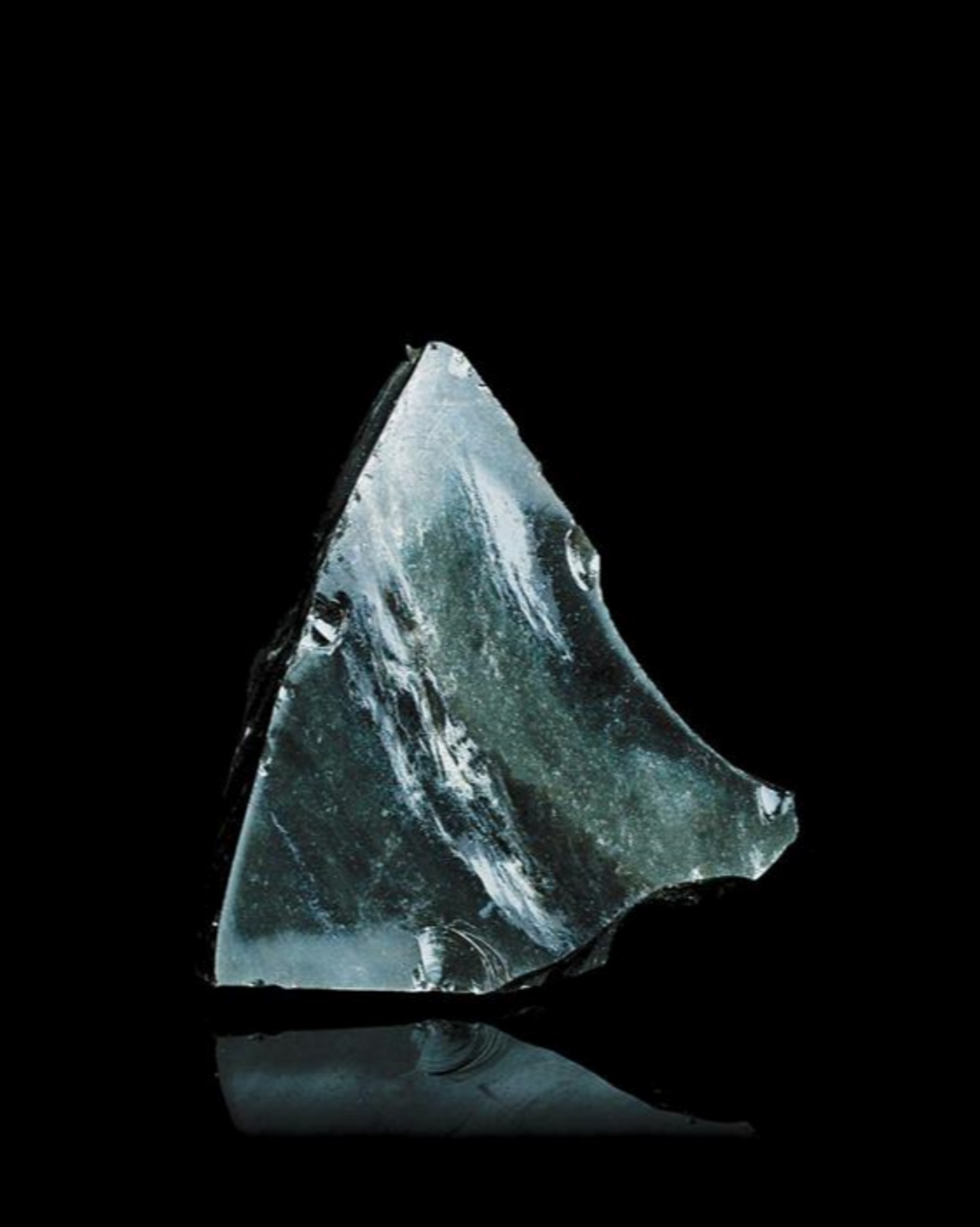Obsidian stone is a type of rock formed from magma-induced lavas.
What Are the Characteristics of Obsidian?
Obsidian is widely known by several different names among the public. One such name is “volcanic glass,” mainly because it is typically found in the vicinity of volcanoes.
- Obsidian is a dark-colored natural stone that forms around volcanoes, with a color range that spans from deep black to light grey.
- While it appears sturdy and resistant to external forces from the outside, it is actually softer than quartz types and has a slightly lower hardness level compared to quartz stones.
- The structure of obsidian stone is tough, not soft, easily broken into pieces, and naturally has sharp edges.
- Due to its brittle nature, obsidian in the wild is found with a fractured structure, possessing sharp edges.
- In ancient times, obsidian stone was used to make fire, cook food, and meet heating needs. Moreover, people of those eras used obsidian to craft spears, knives, and many other sharp instruments for hunting to satiate their hunger.
Today, obsidian is frequently chosen for making cutting tools in the healthcare sector, such as scalpels and scissors. The primary material forming obsidian stone is lava from volcanoes.
The name Obsidian was first mentioned in the year 77 AD in Pliny The Elder’s historical work, “Natural History.” According to this book, the name of the obsidian stone comes from Obsidius, a person who first discovered this stone in Ethiopia. While it was once claimed that obsidian stones formed as a result of explosions on the moon, this hypothesis no longer holds credibility among scientists.
The original color of the obsidian stone is a shade of dark brown. However, its color tends to darken over time. There could be several reasons for this change. The environment in which the obsidian stone is located might be polluted. The high amount of iron in the cooling lava might have given the obsidian stone a darker surface.
The first usage of obsidian stone was determined through archaeological studies to be in Kenya, located on the African continent. Archaeological findings in Kenya provide us with this information. However, due to the lack of systematic excavation in the area, more detailed information is hard to come by.
Our country has several extraction sites for obsidian stone.
- In the Tatvan district of Bitlis, located on Mount Nemrut, obsidian stone is found in green.
- In the Ikizdere location of Rize, red obsidian stones are encountered.
- Obsidian stone has also been identified at the foot of Mount Ararat.
- In the Pasinler district of Erzincan, there is also a small obsidian stone bed.
Global locations of obsidian stone:
- Italy
- Greece
- Hungary
- Japan
- Armenia
- Turkey
- Slovakia
- Indonesia
- Mexico
What Are the Benefits of Obsidian?
- It has a relaxing and purifying effect on the human body, promoting the release of bad energy.
- It aids in digestion.
- It prevents uncomfortable conditions such as pain or discomfort in the joints.
What Does Obsidian Mean?
The meaning of obsidian stone originates from a person named Obsidius. In English, it can closely be understood as volcanic glass or flint.
How Can We Tell if Obsidian is Real?
To determine if obsidian is genuine, one can look for bubbles on its surface. Another method is to check the vibrancy of its color.
How to Clean Obsidian?
Cleaning obsidian stone involves various techniques.
- It can be held under water.
- It can be left out in moonlight.
- It can be cleansed with sage.
